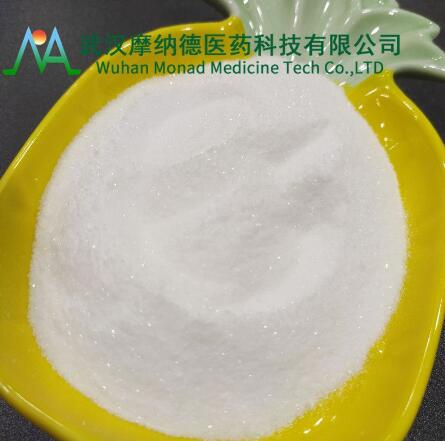Your Position: Home - Chemicals - Iodo-1-P-Tolyl-Propan-1-One: A Versatile Chemical Compound
Iodo-1-P-Tolyl-Propan-1-One, often referred to as PTP, is a chemical compound with a unique structure and a wide range of applications in various industries. This versatile compound has garnered attention in fields such as organic chemistry, pharmaceuticals, and fragrance manufacturing due to its distinctive properties and potential for synthesis. In this article, we will delve into the world of Iodo-1-P-Tolyl-Propan-1-One, exploring its structure, uses, and significance in the realm of chemistry.
Chemical Structure
Iodo-1-P-Tolyl-Propan-1-One, represented by the chemical formula C10H11IO, is a member of the ketone family. Its molecular structure consists of a carbon-carbon double bond (C=O) with an iodine atom (I) attached to one of the carbon atoms. The compound also features a p-tolyl group, which is a benzene ring substituted with a methyl group (CH3) and positioned opposite to the ketone functional group. This unique arrangement of atoms confers distinct chemical and physical properties to PTP.
Applications in Organic Synthesis
Iodo-1-P-Tolyl-Propan-1-One is highly valued in the field of organic chemistry for its role as a versatile synthetic building block. Chemists use it as a precursor in various reactions to create complex molecules and functional groups. Some of its key applications in organic synthesis include:
Arylation Reactions: PTP serves as a valuable reagent in arylation reactions, where it facilitates the introduction of an aryl (benzene ring) group onto another organic molecule. This process is pivotal in the synthesis of pharmaceuticals and agrochemicals.

Cross-Coupling Reactions: It is utilized in palladium-catalyzed cross-coupling reactions, enabling the creation of carbon-carbon and carbon-heteroatom bonds. These reactions play a crucial role in the construction of complex organic compounds.
Heterocycle Synthesis: PTP can be used to synthesize heterocyclic compounds, which are fundamental building blocks in medicinal chemistry and the development of bioactive molecules.
Pharmaceutical Applications
Featured content:The pharmaceutical industry has harnessed the potential of Iodo-1-P-Tolyl-Propan-1-One in drug discovery and development. Its ability to participate in diverse chemical reactions allows for the creation of novel drug candidates and the modification of existing molecules. Some applications include:
Medicinal Chemistry: PTP's role as a versatile synthetic intermediate makes it valuable in the development of pharmaceuticals. Chemists can use it to introduce specific functional groups or structural motifs into drug candidates, influencing their bioactivity and pharmacokinetics.
Radiopharmaceuticals: Iodo-1-P-Tolyl-Propan-1-One is employed in the preparation of radiopharmaceuticals, which are used for diagnostic imaging and targeted cancer therapy. Its iodine atom can be replaced with radioactive isotopes for positron emission tomography (PET) and single-photon emission computed tomography (SPECT) imaging.
Fragrance Manufacturing
PTP's unique aroma and chemical properties make it a sought-after ingredient in the fragrance industry. It contributes to the creation of perfumes and fragrances with distinct olfactory profiles. Fragrance chemists utilize PTP as a key building block in the synthesis of aromatic compounds, allowing them to design unique scents that cater to various consumer preferences.
Safety and Handling
While Iodo-1-P-Tolyl-Propan-1-One has a range of valuable applications, it is essential to handle it with care due to its chemical reactivity. As with many chemical compounds, safety precautions should be observed, including the use of appropriate personal protective equipment and adherence to chemical handling protocols. Additionally, PTP should be stored in a cool, dry place away from incompatible substances.
Conclusion
Iodo-1-P-Tolyl-Propan-1-One, or PTP, is a chemically intriguing compound with wide-ranging applications in organic synthesis, pharmaceuticals, and fragrance manufacturing. Its unique structure and versatility make it a valuable tool for chemists and researchers seeking to create novel molecules, develop pharmaceuticals, and design distinctive fragrances. As our understanding of its properties and applications continues to grow, PTP will likely play an increasingly significant role in the fields of chemistry and industry, driving innovation and advances in various sectors.
489
0
0
Comments
All Comments (0)
Related Articles
What is the difference between phenacetin and paracetamol?
Phenacetin and paracetamol are two pharmaceutical compounds that share similarities but differ in their chemical structures and uses.
By Hou
251
0
0
5 Uses of Benzocaine
Benzocaine is a local anesthetic that belongs to the ester-type anesthetic class. It is commonly used for its numbing properties, providing relief from pain or discomfort in various applications. Here are five common uses of benzocaine
By Hou
307
0
0
What is nano powder used for?
Nano powder, with its unique properties, finds versatile applications across various industries.
By Geym
292
0
0
How do I make my own custom stickers?
By victor
241
0
0
How do you make a custom sticker sheet?
By Franke
296
0
0
Everything You Need To Know To Find The Best Flubromazepam CAS 2647-50-9
Flubromazepam, also known by its CAS number 2647-50-9, is a chemical compound that belongs to the benzodiazepine class. It is important to note that the use and distribution of such substances may be subject to legal restrictions in various jurisdictions, and I cannot provide assistance or guidance on illegal activities.
By Liang
220
0
0
What Features Does an Erlenmeyer Flask Have?
The Erlenmeyer flask, with its distinctive conical shape and narrow neck, is a fundamental tool in laboratories. Its design enhances precision in scientific experiments, making it indispensable for various applications.
By Evelyn
323
0
0
Unveiling the Power of Hydroxypropyl Methylcellulose in Skincare
In the realm of skincare, the quest for effective ingredients is never-ending. Today, we delve into the wonders of hydroxypropyl methylcellulose (HPMC), a versatile compound that has been gaining traction in the skincare community for its myriad benefits.
By Ingrid
262
0
0